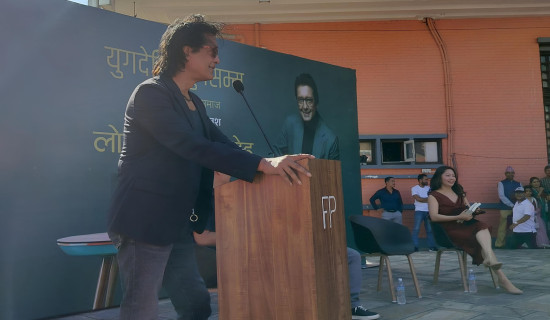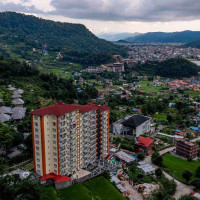- Sunday, 12 October 2025
The legends associated with Nag Panchami
By A Staff Reporter,Kathmandu, July 30: The festival of Nag Panchami was celebrated across the nation on Tuesday by pasting images of the serpent deity above the main entrances of houses and visiting sacred Nag ponds.
In Kathmandu, devotees visited Nag Pokhari and nearby temples dedicated to snake deities to offer prayers and perform rituals.
According to the Nepali calendar, Nag Panchami falls on the fifth day of Shrawan Shukla Panchami. On this day, snake worship rituals are performed, accompanied by fasting and prayers.
Fairs are held at sites such as Taudaha in Kirtipur and Nagdaha.
Snake worship in the Newar community is considered an ancient tradition and is regarded as a form of nature worship, rather than a strictly religious practice. According to legend, when Manjushree released the water from a massive lake that once filled the valley, the Naga kings and queens were angry after the destruction of their habitat and prepared to leave with the receding waters. Realising that their departure would lead to future water shortages, Manjushree prayed for forgiveness and calmed down them by creating ponds in various locations. It is believed that since then, the Newar community began worshipping the Nagas.
In Newar tradition, Nagaraj (serpent king) and Nagarani (serpent queen) are also worshipped as bringers of rain. Since snakes are associated with water, it is customary to worship them at natural water sources such as stone spouts, wells, and ponds.
In another legend, during the reign of King Narendra Dev, Guru Gorakhnath, in anger, subdued all the snakes of the valley and sat upon them, leading to a drought. When Rato Machindranath was brought to the valley, Gorakhnath rose to honor his guru, thereby freeing the snakes. Rainfall soon followed, and this tale continues to be passed down through generations.
After Manjushri established the valley, it is believed that 12 great serpents were entrusted with the protection and water resources of the valley
The 12 great shrines in the Kathmandu Valley and their protector Nagarajs are: Punya Tirtha of Gokarna — Takshak Nagaraj, Shanta Tirtha of Guhyeshwari — Sokshiki Nagaraj, Shankhar Tirtha of Shankhamul — Shankhpala Nagaraj, Raj Tirtha of Sanepa — Swaroop Nagaraj, Manoratha Tirtha of Tokhaduwa — Kulik Nagaraj, Nirmal Tirtha of Shobha Bhagwati — Aplal Nagaraj, Lakhu Tirtha of Kankeswari — Nanda Nagaraj, Gyana Tirtha of Kalimati — Upananda Nagaraj, Chintamani Tirtha of Teku Dobhan — Basuki Nagaraj, Pramod Tirtha — Padmadhaval Nagaraj, Sulakshan Tirtha of Bhajanga — Mahapadmadhaval Nagaraj, and Jay Tirtha of Nakhu — Kanti Nagaraj.
As part of the ritual, Newar families place hand-drawn snake paintings made by the Chitrakar community at their doorways using cow dung, and make offerings of cow dung, milk, and money. It is believed that by honouring the serpent deity in this way, the household is protected from disease, misfortune, and negative energies.
But now, with the growing number of machine-made Nag posters in different sizes, the traditional hand-made paintings are disappearing. Hand-made paintings are now rarely found in the market.
Chet Kumari Chitrakar, a 72-year-old hand-made snake painter from Yachhe, Bhaktapur-6, has been preserving this traditional art form by continuing to draw snake paintings by hand.
In the past, when traditional snake paintings were in high demand, she used to earn between Rs. 60,000 to 700,000 during this season. But now, she said, “I only make them for household use and give them to relatives and neighbors. I now make only 100 to 200 pieces, whereas I used to make 5,000 to 6,000 pieces in the past.”
She further shared, “I continue doing this in my old age just to honor the last words of my father-in-law on his deathbed. He told me to continue this tradition after his passing.”




-square-thumb.jpg)











